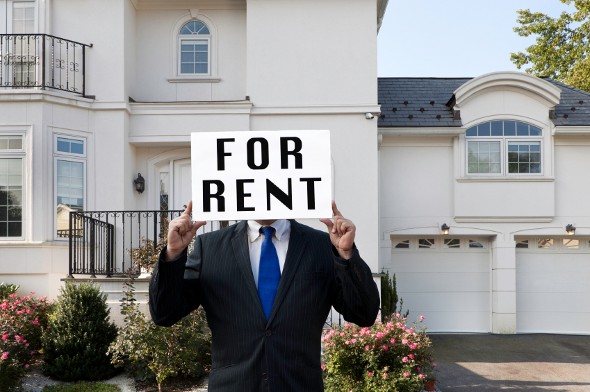Renting out your house might be worth considering, especially if you’re ready to relocate and you’re opposed to selling. Picking up a tenant could help you pay off your mortgage more quickly. Plus, you could put the money you’ve earned toward a financial goal, such as into a retirement account. If you’re not sure what to charge for rent, here are some factors you’ll need to take into account.
Do you have questions about how your rental income could affect your long-term financial plan and tax situation? Connect with financial advisors who serve your area and talk it over.
What to Consider Before Renting Out Your Home
Deciding to rent out your house rather than sell it might make sense for various reasons. Perhaps you’re having trouble finding a buyer, especially one willing to pay your asking price. Or maybe you haven’t built up enough equity in your home for a sale to be worthwhile.
But allowing someone to rent your home, even temporarily, is a big deal. For one, are you ready to become a landlord? Regardless of how responsible your tenants might initially seem, they could end up destroying your home or bringing down its overall property value. You might also need to be prepared to have a flexible schedule, so your tenants can reach you if a toilet clogs or a pipe bursts.
On the other hand, renting out your home could provide you with enough money to pay off your mortgage. That could be a great way to rake in extra cash if you’re waiting for your home’s value to go up. You could then use the remainder of your earnings as profit or savings.
Budgeting for Repairs
Turning your home into an investment property could be a financially risky move. You might have to spend money to fix up the property before you can rent it out, and you’ll certainly want to budget for repairs and maintenance, as you’ll be responsible for maintaining the property and addressing any issues that arise during the tenant’s lease.
Experts often recommend setting aside between 5% and 10% of the gross rent for maintenance costs. For example, if your property rents for $1,500 per month, you should set aside between $75 and $150 for maintenance and repairs each month. Common expenses may include:
- Routine maintenance, such as HVAC servicing
- Lawn care
- Minor repairs like fixing leaky faucets
It’s also a good idea to account for larger, unexpected repairs like a roof replacement, water heater failure or major plumbing issues. Having an emergency fund dedicated to these costs can help prevent financial strain if something goes wrong.
Accounting for Future Vacancies
Rental properties experience vacancies, and planning for them helps maintain financial stability. A common approach is factoring in a vacancy rate, typically expressed as a percentage of annual rental income. Researching local vacancy trends can provide a realistic estimate.
For example, if similar properties in your area have a 5% vacancy rate, budgeting for one month of lost rent per year can help offset potential gaps.
Setting aside a portion of rental income as a reserve fund also cushions against vacancies. Landlords can minimize downtime by maintaining the property, setting competitive rates and marketing effectively. Shorter lease terms may allow for rent adjustments but can also increase turnover risk. Offering incentives, such as flexible lease options or minor upgrades, can help retain tenants longer.
Determining How You’ll Collect Rent
You’ll also need to decide whether you’ll collect rent, and handle all maintenance requests, yourself, or if there’s a benefit to hiring a property manager.
Managing the property yourself can save money, as you won’t have to pay property management fees, which typically range from 8% to 12% of the monthly rent. If you have the time and live near the rental property, self-managing can allow you to handle issues directly, build a relationship with your tenant, and maintain full control over rent collection and maintenance requests.
However, this requires a significant time commitment. You’ll also be responsible for all aspects of the rental process, including finding tenants, collecting rent, handling repairs and managing any disputes. If you have a busy schedule, this can become overwhelming.
Hiring a property manager can ease the burden. They’ll handle day-to-day tasks like rent collection, tenant screening and coordinating repairs. While it does come at a cost, a property manager also brings experience in handling legal issues and lease agreements.
Other Factors That Determine Rents

When you’re trying to determine how much rent to charge, there are a number of things you should think about.
1: Research Comparable Properties
A good first step is researching comparable properties in your area. Looking at similar rentals – often called “comps” – helps establish a competitive price. Factors such as square footage, number of bedrooms and bathrooms, included amenities, and location all impact rental value. Online platforms like Zillow, Rentometer, and Craigslist provide insights into what nearby landlords charge. You may also consider hiring a home appraiser who can give you a more accurate assessment of what it’s worth based on the condition of the home, local home sale prices and where the home is located.
It’s useful to compare properties with similar features, such as updated kitchens, parking availability, or included utilities, to see how they affect rental rates. If your property offers unique advantages – like a fenced yard or in-unit laundry – you may be able to price slightly higher. Conversely, if nearby listings offer more for the same price, it may be necessary to adjust expectations.
2: Check the Laws in Your Jurisdiction
You can’t necessarily choose whatever rental rate you want. Some states limit what landlords can charge for rent, security deposits and late fees.
California, Oregon, and some cities in New Jersey and New York have rent control laws that limit not only how much landlords can charge for rent, but also how often they can raise rent.
Maryland, meanwhile, has rent stabilization for Takoma Park. The annual rent stabilization allowance is published each year, setting the maximum rent rate landlords can charge.
You’ll also want to understand all local regulations and state laws in regards to things like noise ordinances, property inspections and zoning regulations. Landlords must maintain safe living conditions, adhering to housing codes regarding structural safety, utilities and health standards.
3: Check for Seasonality
If your property is in a place such as a college town or vacation destination, you’ll want to research comparable rental rates in terms of seasonality, as well. Typically, spring and summer are peak rental seasons, with higher demand as people prefer to move during warmer weather and when school is out. This increased demand often allows landlords to charge higher rent.
On the other hand, fall and winter tend to be slower rental periods, leading to longer vacancy times and sometimes lower rental rates to attract tenants.
Calculating How Much to Charge in Rent
When it comes time to determine how much to charge, a common starting point is the 1% rule. This rule of thumb suggests charging 1% of the property’s value in monthly rent. For example, a home worth $300,000 would rent for about $3,000 per month. However, this rule is a rough guideline – market conditions, location and demand can push the rate higher or lower. The rent you ultimately charge may fall between 0.8% and 1.1%. Others, meanwhile, may adhere to the 2% rule.
Landlords must account for fixed and variable costs to ensure profitability. Fixed costs include mortgage payments, property taxes, insurance and HOA fees. Variable costs cover maintenance, repairs, and property management fees. Many landlords use the 50% rule, which assumes about half of rental income will go toward operating expenses. If total expenses are $1,500 per month, rent should be set high enough to cover costs and generate profit.
Comparing similar properties ensures that rental prices align with market demand. Researching comparable rentals in the area helps refine the price. If comps suggest a lower rate than expected, landlords may need to reconsider pricing or improve the property’s features to justify a higher rent.
How to Calculate Rent: An Example
Consider, a hypothetical property owner named Sarah. She owns a three-bedroom, two-bathroom home in a suburban neighborhood and she decides to rent it out. A local Realtor estimates her home is worth $350,000. Using the 0.8%-1.1% rule, she considers rent between $2,800 and $3,850.
Since her mortgage is $1,500, while property taxes and insurance total $400, she budgets $300 for maintenance and vacancies. This means she needs to charge at least $2,200 to break even.
After during some market research, Sarah determines that similar homes in her area rent for $2,500 to $3,000 per month. But since her home has new appliances and a fenced yard, she decides to charge $2,800 to remain competitive while covering her costs.
How Do I Put My House Up for Rent?
When you’re ready to find tenants to rent your home, you can ask a real estate agent to list it. But that comes with a cost. You’ll owe your agent commission, whether that’s equal to one month’s rent, or another percentage.
If you want to publish your real estate listing, you can upload it onto a site like Zillow. You can make flyers to hand out or use your social media accounts to get your rental out there. Before you hand over the keys to your house, be sure that your prospective tenants have solid financials. Doing this will ensure you know they can afford to keep up with their rent.
Bottom Line

If you’ve chosen to rent out your house, you can’t charge rent solely based on your mortgage payments. Picking a rental rate based on the total cost of turning your home into an investment property and on other rent prices in your area can ensure you simultaneously make a good return and find tenants promptly. This part of becoming a landlord is perhaps the most important. It could determine the success your property has for the foreseeable future.
Tips for Using Rental Income to Maximize Your Financial Plan
- Owning and renting out an apartment or home can have a profound effect on your income picture. A financial advisor can help you plan for this income in your financial and tax plans. Finding a financial advisor doesn’t have to be hard. SmartAsset’s free tool matches you with up to three vetted financial advisors who serve your area, and you can have a free introductory call with your advisor matches to decide which one you feel is right for you. If you’re ready to find an advisor who can help you achieve your financial goals, get started now.
- If you’re unsure about investing in homes, apartments or land, check out SmartAsset’s comprehensive guide to real estate investing.
Photo credit: ©iStock.com/kosmos111, ©iStock.com/Gawrav Sinha, ©iStock.com/DanielMirer
